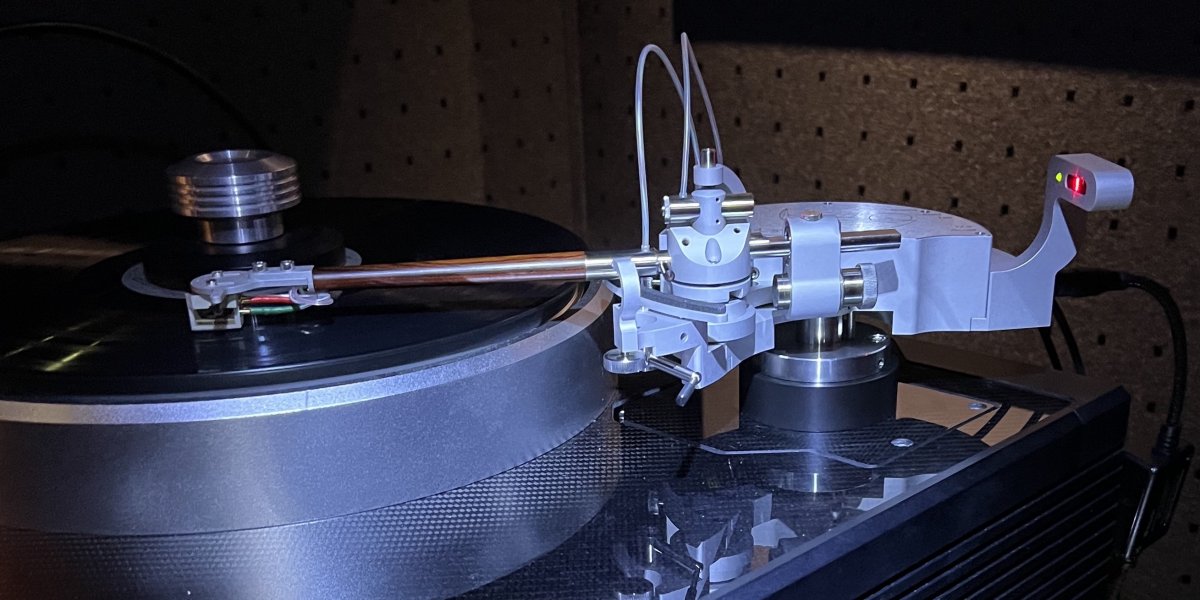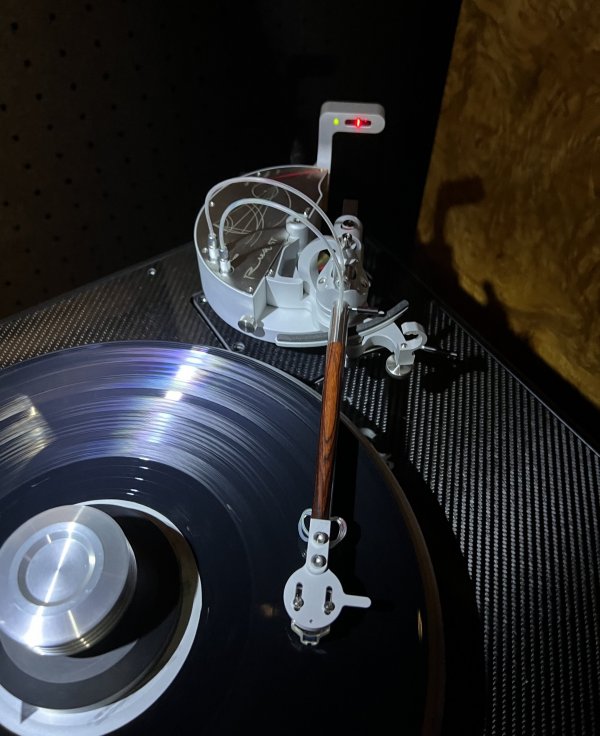You make situational OCD seem like an attribute! Trust me, it's a curse, although it can be productive.Marty and I have known each other since 1970 and have stayed close during essentially all of the intervening years. Audio has always been a core bond between us as we each advanced in the very elite end of this hobby. Since Marty has been one of my closest friends for so long I know him quite well, just as he knows me. It has been a standing joke between us that his strong OCD streak in his personality has been a huge asset to his current skill level designing and setting up a system.
Now that he is truly seasoned in this space and has the ability and connections to purchase what he desires and deems important, something really special is likely to develop in Marty's amazing music room. While my system is certainly no slouch, Marty and his knowledge, skill set, the best ear I know for live performances driven by his need for perfection, I would always bet on Marty ultimately sitting at the top of the elite pyramid of audio connoisseurs' systems.
Since September 2, I have not turned my system on, nor been home due to some very extreme medical problems that have eliminated my ability to be mobile, thus not being as in touch with Marty's audio growth as typical. He has recently implimented several major system changes that now produce a sound stage and listening experience that is just staggering. During our relationship Marty and I have been on many audio excursions, some quite interesting and special. Amongst the most interesting and certainly special, was a joint visit that lasted all night to the fabled factory Jon Inverson where he had his alleged force fields.
Many speculate that the force fields nevered actually existed. I can guarantee with 100% confidence that they were very real, and while not perfect, incredible in some key area's, with little if any competition. After hours of listening in the most industrial location imagineable, I came to realize that what was so special about that listening experience, was the believability that generated tremendous involvement. Some the quality of the sound was Iversons's amazing class A Electron Kinetics amp designed specifically to drive these highly unusual speakers, but the force fields had a super electrostatic precision, without all of the subtle, but degrading imperfections in audio playback. Voices and their relationship to their environment were in a class I never knew existed, and found to be truly mesmerizing. Since then, I have strived to create a system that has some of that sound that Iverson created.
Last night, I heard it again at Marty's house on his newly configured system that I am quite familiar with histortically. Put simply, I have no idea how to top what Marty has put together. First of all his room is amazing to the point that a Radio Shack table radio would sound good in it. Most of his system has been around for a while, although always being tweaked. The new additions are the Wilson Alexx V's and a pair of Gryphon Class A Mephisto monoblocs, plus some tube adjustments in Marty's Golden Gate Lampizator, and serious and multiple physical and A-B adjustments (OCD)
I have always loved truly good class A sound becauase of its believable effortless cohesiveness. Unfortunately, the associated heat has always been a problem for me due to listening room constraints, removing them from my list of feasible audio objectives. Well Marty's system has the amps in their own room which isolates the heat, leaving their amazing sound, which he has brilliantly messed with the Alexx's and JL Gotham's. For four hours we sat last night listening to an amazing list of digital and vinyl pieces, which all had some degree of this amazing Class A believeability. I am familiar with a large amount of what Marty played since great music remains great and we have been together for a long time. However, as is usually the case, he also had some really interesting new music that he thought I would like.
What a joy to be drolling in anticipation to hear the next sound with this amazing Class A sound that Marty's system produces in huge quantities, effortlessly. It is impossible to resist or ignore. The power of its attraction is so great that you get pulled in as if by a tractor beam. Marty can describe his system way better than me, however I have been around long enough that I know when I am in the presence of something truly special. Marty's system is now truly special and a tremdous sonic tool.
Yes, it took a while to tweak things accordingly when the Mephistos arrived. As we all know, everything matters when it comes to system synergy. The recent work focused on dialing in the Lampi GG and the Gryphon with tube changes. Previously, I was using KR242 and an EML 274b . This has evolved to where I am now using a Dutch GZ34 recti and the KR 242 RK output tubes and that combo seems to hit it out of the park with the Mephistos (where it did not with the Parasounds/CH 10M/Soulution 701). The stock KR242's are superb and in some ways easier to listen to, but if you have a system that will allow for the highest resolution ancillary components to shine, the 242-RK offers more resolution, especially in the bass - at least in my current rig-while still being highly musical. The system is indeed an excellent tool, but mostly just makes for some damn fine "ordinary" listening.
Last edited:




